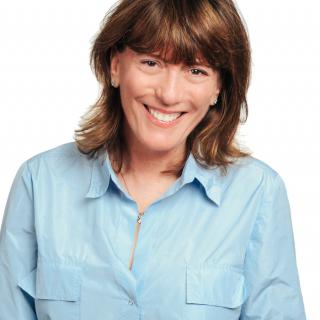
Heather and John Kahan could have been forever crushed when their son Aaron Matthew, seeming to have been born healthy, died soon after birth. Kahan has turned his family’s profound heartbreak into an opportunity to advance medicine, science and technology to hopefully unlock answers leading to a cure for SIDS.
Recruited by Steve Ballmer 15 years ago to leave his home state of New York and IBM, Kahan would only move to Seattle with his wife and kids if his parents’ joining were part of his Microsoft relocation package. Who doesn’t want that son?
Meeting Kahan makes you revisit your reserved notions around high frequency connections and the magical dimensions of the universe. I had a powerful lesson in how devastation can cause transformation. He radiates kindness, optimism and warmth which overshadows what is surely one of the most gifted and sharp minds.
His new mouthful of a title is chief data and analytics officer, corporate external and legal affairs.
“John’s team will have an ambitious mission: to derive new insights and infuse data science to address the world’s great challenges. This will include promoting the sustainable use of the planet’s resources, improving opportunities for people with disabilities, protecting human rights, strengthening humanitarian assistance and increasing the capabilities of the world’s NGOs,” to quote his boss Brad Smith, Microsoft's president and chief legal officer.*
But today, he’s razor sharp focused to raise awareness and funds with the First Steps for SIDS campaign.
How have you managed to embrace the loss of your son?
Fifteen and a half years ago I was truly feeling really blessed. I came to Microsoft with my wife Heather, who was 6 ½ months pregnant. On October 6, 2003, our first son was born and we were overjoyed having been fortunate to already have three spectacular girls. Having our first boy was a very big deal.
Aaron Matthew was born and he was doing what new born infants do. Then tragedy struck and six hours after his birth he stopped breathing. Aaron was rushed to Seattle Children’s Hospital and the amazing doctors did everything they humanly could. Grief for our lost baby was all-consuming for a long time. And then, at some point, we felt the need to do something.
It’s impossible to stand in your shoes at that moment of pure tragedy.
You can imagine how completely devastating this was for our family. In spite of all of what was happening around us, we felt incredibly lucky that Aaron was at Seattle Children’s where they did everything they could to understand what happened. But even to this day, they don’t know why Aaron died [of SIDS].
How have you channeled this heartbreak into action?
When you start to just conceptualize what I began to learn, you grasp how shocking the data is. Since Aaron died in the United States, 60,000 infants have died from SIDS.
The United States has one of the highest infant mortality rates in all of the developed world markets.** We are 32 of the top 36 markets in infant mortality. Six out of every thousand children in the U.S. die before their first birthday and one of those six dies of unexplained and unexpected causes.
SIDS is the leading cause of death for infants 1-month- to 1-year-old. This is why we has to launch the First Steps for SIDS campaign.
How has your professional life merged with your passion to advance SIDS research?
About 2.5 years ago an absolute miracle happened. I was trying to raise awareness and money for the research going on at Seattle Children’s.
My incredible Microsoft data scientist and colleague Juan Lavista Ferres had recently had a new baby, and wanted to help our cause. He went to go meet with Nino Ramirez, Ph.D. and director of the Center for Integrative Brain Research at Seattle Children’s. They married medical research with data science.
They opened up new avenues of research and then Microsoft got 100 percent behind it from our CEO [Satya Nadella] to Kathleen Hogan [executive vice president for human resources and chief people officer]. They’ve donated all kinds of resources and efforts in order to help us moving forward.
We’ve partnered with the world’s most renowned researchers at Seattle Children’s and now researchers from all over the world have joined our movement on their own dime, from as far away as New Zealand, Norway and the United Kingdom.
So, what's the latest news?
We have already found incredible avenues of correlation that people didn’t understand before. This funding is helping researchers to accelerate and open up new ideas which is leading to the building of the first ever Infant Genome Database that is totally focused on infant mortality in the United States.
We’ve moved 176 children’s tissue samples to Seattle Children’s and we’ve begun the sequencing work with the guidance and support of Microsoft Genomics. Aaron Matthew, my son, is the first child in that database, which for me is incredible.
We didn’t even know that they had his tissue samples but Seattle Children’s was smart enough 15 years ago, when they didn’t yet have sequencing capabilities, to put away samples for science. They came to my wife and me and asked if they could re-identify his tissue for this research.
Bringing Aaron back to us in this way and being part of this miraculous research movement is everything, and it has all occurred because of Aaron.
*Editor's note: An earlier version of this article listed Microsoft CEO Satya Nadella as the source of the quote. The article has been updated to reflect the accurate person quoted.
**Editor's note: An earlier version of this article stated that the United States has one of the lowest infant mortality rates in all of the developed world markets. The article has been amended to say highest.











